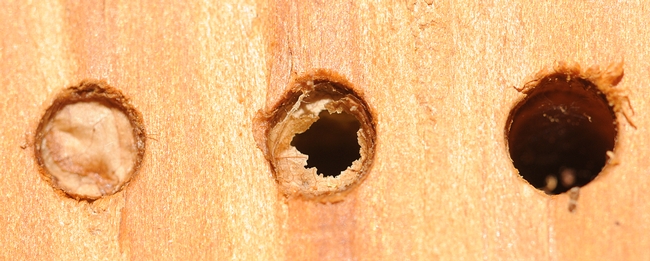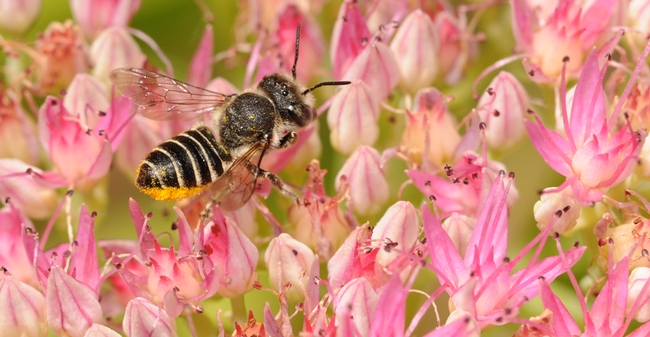First you give them roots, then you give them wings.
That's what's happening in our bee condo, a wooden block (nest) with drilled holes for leafcutting bees (Megachile).
They flew in, laid their eggs, provisioned the nests with pollen and leaf fragments, and capped the holes.
We had 11 tenants. Now there's a hole in one.
Success! A leafcutting bee emerged. Native pollinator specialist Robbin Thorp, emeritus professor of entomology at UC Davis, says that "Some leafcutting bees, especially the introduced ones like the alfalfa leafcutting bee, have more than one generation per year. Bees of the second and third generation may clean out or partly clean out old nest holes like this and construct a new nest inside. Sometimes you can find new leaf material inside the old cocoon of the previous nest builder. Thus, the tunnels get smaller in diameter with succeeding generations. Kind of like the build up of old cocoons in honey bee comb and resulting smaller inner diameter of the brood cells in old dark comb."
It's all rather exciting being a "beekeeper." We've never had a hole in one--'til now.
If you, too, want to keep native bees, Thorp has compiled a list of where you can buy homes for them or where you can learn how to build your own. The list is on the Harry H. Laidlaw Jr. Honey Bee Research facility website.
You can also buy them at beekeeping supply stores.
Now that we have a hole in one, 10 tenants to go...
Attached Images:

Hole in one--a hole signifying the emergence of a leafcutting bee (Megachile). (Photo by Kathy Keatley Garvey)

Leafcutting bee provisioning her nest. (Photo by Kathy Keatley Garvey)

Leafcutting bee on sedum. (Photo by Kathy Keatley Garvey)